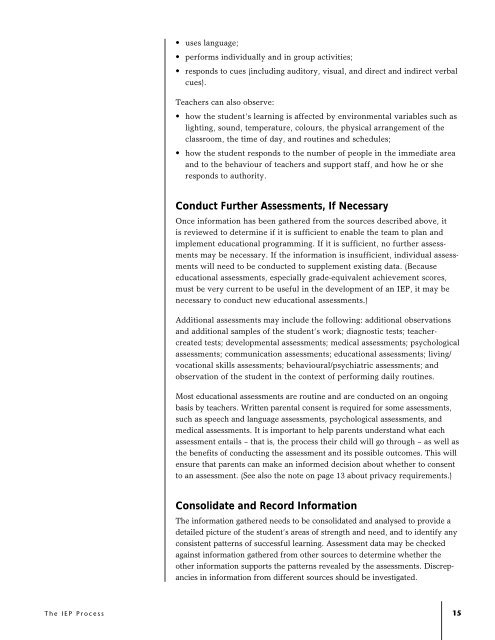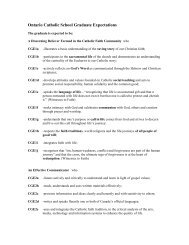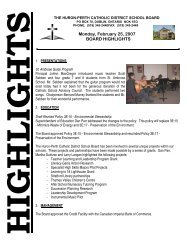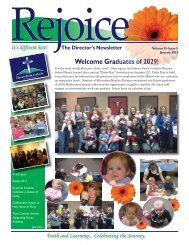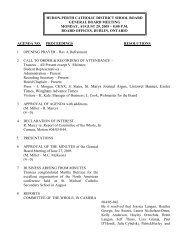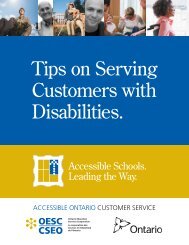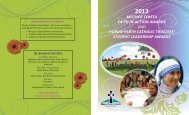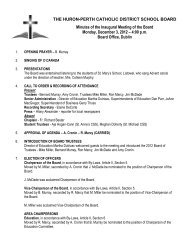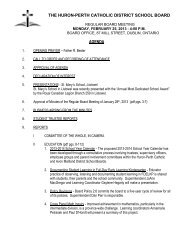The Individual Education Plan (IEP) - A Resource Guide, 2004
The Individual Education Plan (IEP) - A Resource Guide, 2004
The Individual Education Plan (IEP) - A Resource Guide, 2004
You also want an ePaper? Increase the reach of your titles
YUMPU automatically turns print PDFs into web optimized ePapers that Google loves.
• uses language;<br />
• performs individually and in group activities;<br />
• responds to cues (including auditory, visual, and direct and indirect verbal<br />
cues).<br />
Teachers can also observe:<br />
• how the student’s learning is affected by environmental variables such as<br />
lighting, sound, temperature, colours, the physical arrangement of the<br />
classroom, the time of day, and routines and schedules;<br />
• how the student responds to the number of people in the immediate area<br />
and to the behaviour of teachers and support staff, and how he or she<br />
responds to authority.<br />
Conduct Further Assessments, If Necessary<br />
Once information has been gathered from the sources described above, it<br />
is reviewed to determine if it is sufficient to enable the team to plan and<br />
implement educational programming. If it is sufficient, no further assessments<br />
may be necessary. If the information is insufficient, individual assessments<br />
will need to be conducted to supplement existing data. (Because<br />
educational assessments, especially grade-equivalent achievement scores,<br />
must be very current to be useful in the development of an <strong>IEP</strong>, it may be<br />
necessary to conduct new educational assessments.)<br />
Additional assessments may include the following: additional observations<br />
and additional samples of the student’s work; diagnostic tests; teachercreated<br />
tests; developmental assessments; medical assessments; psychological<br />
assessments; communication assessments; educational assessments; living/<br />
vocational skills assessments; behavioural/psychiatric assessments; and<br />
observation of the student in the context of performing daily routines.<br />
Most educational assessments are routine and are conducted on an ongoing<br />
basis by teachers. Written parental consent is required for some assessments,<br />
such as speech and language assessments, psychological assessments, and<br />
medical assessments. It is important to help parents understand what each<br />
assessment entails – that is, the process their child will go through – as well as<br />
the benefits of conducting the assessment and its possible outcomes. This will<br />
ensure that parents can make an informed decision about whether to consent<br />
to an assessment. (See also the note on page 13 about privacy requirements.)<br />
Consolidate and Record Information<br />
<strong>The</strong> information gathered needs to be consolidated and analysed to provide a<br />
detailed picture of the student’s areas of strength and need, and to identify any<br />
consistent patterns of successful learning. Assessment data may be checked<br />
against information gathered from other sources to determine whether the<br />
other information supports the patterns revealed by the assessments. Discrepancies<br />
in information from different sources should be investigated.<br />
<strong>The</strong> <strong>IEP</strong> Process<br />
15


